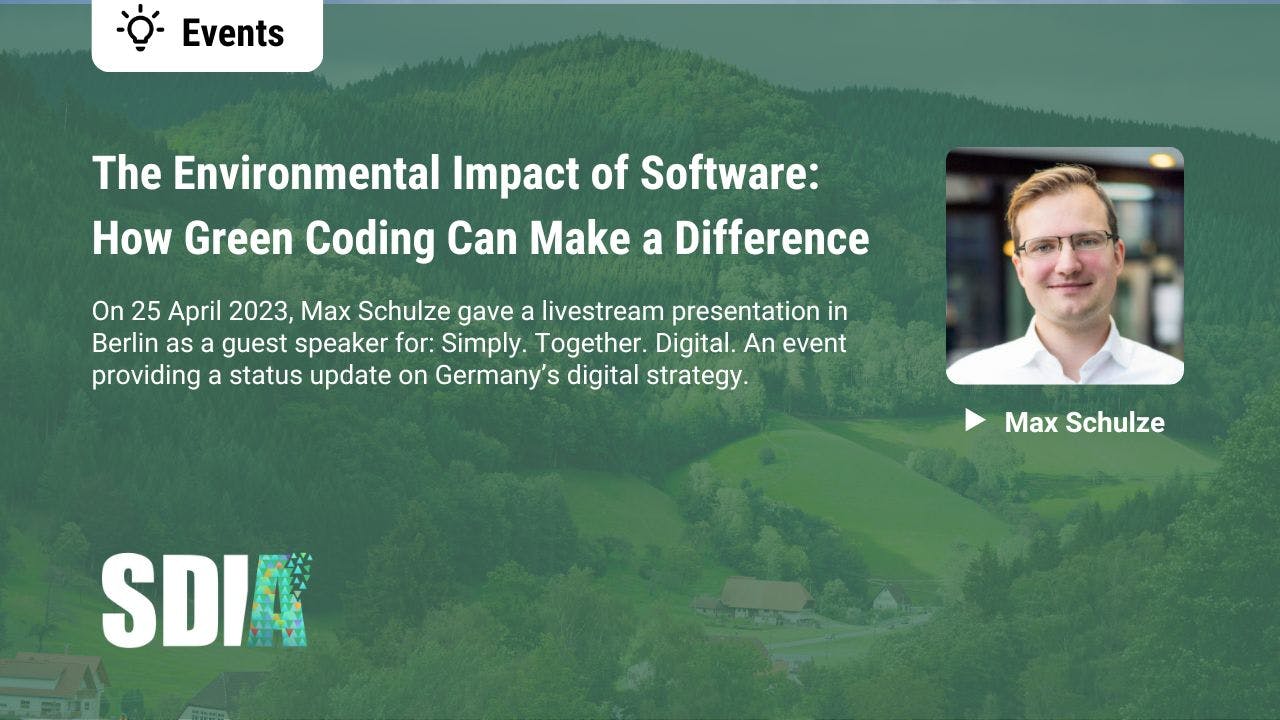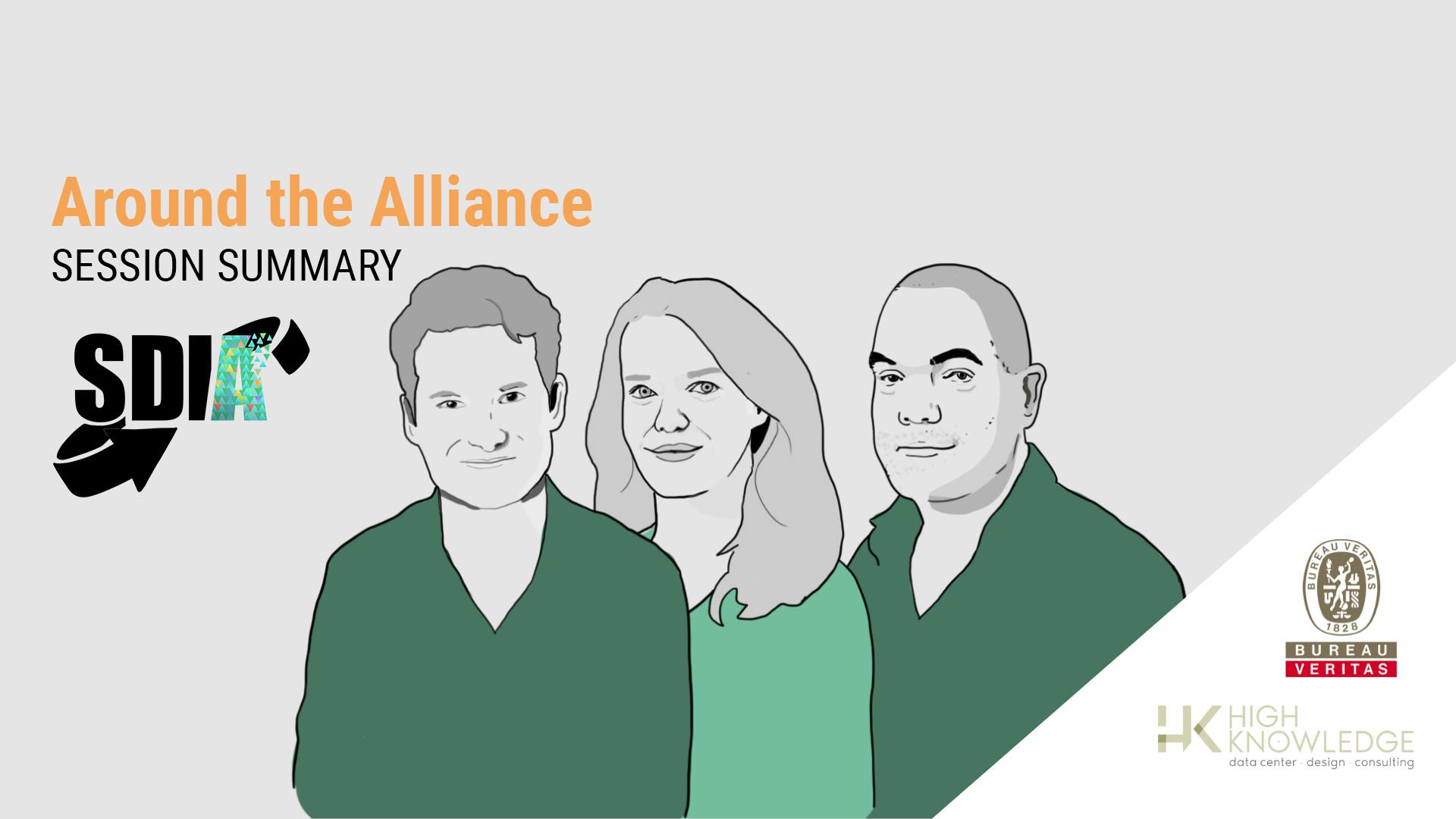On Tuesday 25 April 2023, Max Schulze gave a live-streamed presentation in Berlin as a guest speaker for: Simply. Together. Digital. An event running for the second year, providing a status update on Germany’s digital strategy, hosted by the German Ministry of Digital & Transport. The event was hosted by Minister Volker Wissing. The event asked about the tangible benefits large and small projects have for the citizens. Max’s session on behalf of the SDIA was entitled: Digital Strategy for Germany "Green Coding".
Below you find an article highlighting the key points of Max's presentation.
We have almost reached maximum energy efficiency in the generation of digital resources
As we move further into the digital age, it's crucial to acknowledge that software has a higher energy consumption. The computers creating digital resources are becoming more powerful, meaning that software eventually consumes even more energy. Additionally, microchips are not getting smaller, therefore are longer becoming more energy efficient. All of this has an environmental impact, including manufacturing computers, which is just as significant as energy consumption.
How Green Coding is Making a Difference
To address this issue, we must adopt a new approach to software development called "Green Coding” - an approach that is based that requires three e:
- Responsibility means the digital sector must take responsibility for the environmental impacts of digital resources. This requires attention and visibility for the environmental impact caused by the digital economy and digitization.
- Transparency requires that providers of digital resources make the environmental impact visible and transparent for software manufacturers and developers. Rules are necessary, as infrastructure providers have no incentive to make the environmental impact of their resources visible.
- Tools and methodology are also essential for Green Coding. An ecosystem is emerging across Europe for tools and methods developed by volunteers and made available as free open-source software. These volunteers need support and visibility, as well as a framework to further develop their tools in a value-oriented manner.
Drupal, a use case example
One example of how Green Coding can make a difference is Drupal, a free and open-source content management system, that currently powers 937,000 websites worldwide.
Assuming that each Drupal website uses an average of 10% of the generated digital resources of a server, this corresponds to an energy consumption of 205.2 million kWh per year. A 1% reduction in the consumption of digital resources for all Drupal installations corresponds to a reduction in energy consumption of approximately 2 million kWh per year - which is the annual electricity consumption of 1380 single-person households per year.
Sustainable Digital Transformation
Here at the SDIA, we work towards achieving sustainable digitization and as an exchange platform for actors who want to shape a sustainable digital future. We believe in sustainability for people, the environment, and the economy, transparency, responsibility, regionality, and thinking ahead.
And as the digital sector continues to grow, it is imperative that we prioritize sustainability for the sake of people, the environment, and the economy. To achieve this goal, we need to embrace transparency and take responsibility for the environmental impact of our digital resources. We also need to think regionally and consider the local impacts of our digital activities.
Therefore, we believe that Green Coding is an important approach that must be adopted by the digital sector to mitigate the environmental impact caused by the consumption of digital resources. And by working together towards the adoption of this approach, we can indeed build a sustainable digital future.

.jpg?ixlib=gatsbyFP&auto=compress%2Cformat&fit=max&rect=0%2C44%2C600%2C800&w=600&h=800)

.png?ixlib=gatsbyFP&auto=compress%2Cformat&fit=max&w=1920&h=1080)
